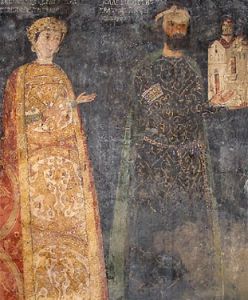
Boyana church is one of the world popular cultural sites in Bulgaria. It is situated in the capital of Bulgaria - Sofia, in the foot of Vitosha Mountain. Because of its unique architecture and well-preserved murals from the Middle Ages it is included in UNESCO’s list.
The church was built in three stages. The earliest dates from the end of X c.-beginning of XI c., when the east wing of the two-storey church was constructed, the second- in the middle of XIII c. (the central wing was erected then) and the latest stage was in mid XIX c. when expansion in the west part of the church was made.
There are three layers of frescoes in Boyana church and every layer is from a different period. The first layer dates from XI-XII c. Fragments from that decoration could be seen over the lower parts of the apse and the northern wall, on the western and southern vaults and on the upper parts of the western wall. These paintings are in bright colours and are done in the technique “fresco” that was typical for the period. The second layer is from 1259. There is an inscription in the narthex which says the year of church’s enlargement and the name of the donor- Kaloyan Sebastocrator. Murals from that period are the most impressing - more than 240 figures, made by an unknown artist and all of them are vivid, individual, with their own style and look, the first realistic paintings in Europe preceding the European Renaissance. The third layer is from XIV, XVI-XVII and XIX c. and includes the mural images of St. Nikolas and St. Panteleimon, as well as the scenes of the iconostasis.
Paintings in Boyana church are an outstanding example of Bulgarian and European medieval art. A visit to Boyana church is included in each cultural and historical tour in Bulgaria. |

